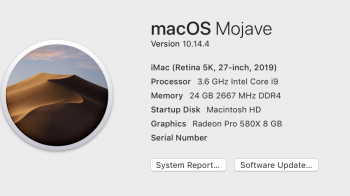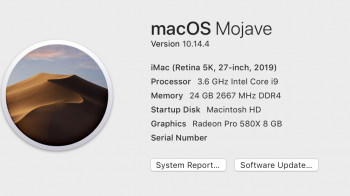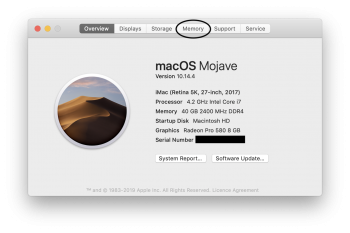I've had a little bit more time to play around, and compare it what was previously the top end 2017 iMac (4.2 GHz i7).
Geekbench
View attachment 829471
View attachment 829472
We see significant gains on multicore. But not everyone likes benchmarks. What is the real world CPU gain? I encoded a sample video file in Handbrake (something I do often anyway) on both machines, using the Fast 1080p30 preset. The 2017 i7 iMac took 6 minutes and 9 seconds to re-encode about 7 minutes of 1440p60 footage down to 1080p30. Which is a respectable time. The 2019 i9 iMac managed it in 3 minutes and 33 seconds, which is right in line with the benchmarks.
Fan noise
In the above test, the 2019 i9 iMac was actually significantly quieter than the 2017. The fans did not ramp up to maximum on the 2019, whereas they did on the 2017.
But I was curious whether this was just my perception, so I ran it again and recorded the fan speeds and temperatures.
The 2017 iMac shot straight to 100 Celsius CPU temperature, with the fans at the maximum 2700 RPM for most of the encode.
The 2019 iMac had a maximum temperature of 92 Celsius and a maximum fan speed of 1650 RPM.
On an unrelated matter, is anyone else’s About This Mac page not showing the memory tab anymore?
View attachment 829481 View attachment 829482
Those are beastly numbers. Yes, benchmarks should be taken with a grain of salt especially multi core CPU results because in real world use cases apps like 3D and video rendering are being shifted to the GPU. It makes more and more sense to purchase an eGPU chassis and upgrade it whenever needed.






